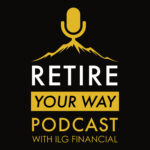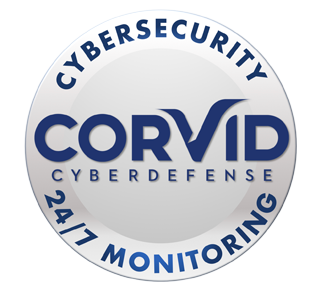 A 401(k) is a common savings tool for many working Americans. It’s an easy way to save and generally comes with the benefit of employer matching. But are you really clear on where your money is invested and if it’s the optimal place for your stage in life?
A 401(k) is a common savings tool for many working Americans. It’s an easy way to save and generally comes with the benefit of employer matching. But are you really clear on where your money is invested and if it’s the optimal place for your stage in life?
It’s time to look at the makeup of most 401(k)s.
Mutual Funds and, more recently, Exchange Traded Funds (ETFs) are the most common investment options found in a 401(k) package. And within these, the options range in risk level, helping you decide which options to choose. As your life changes—be it age, income, or family size—so can your 401(k), so take time to review it occasionally.
Conservative Funds: Need an investment option that minimizes risk? Start here. These funds are typically predictable and slow-growing, offering some level of confidence that your money will be there when you need it.
Value Funds: Start in this category if you’re interested in a business offering dividends. These funds are typically comprised of undervalued companies that need investors that are willing to accept a level of risk and are looking for a dividend when the business succeeds.
Balanced Funds: This is your middle-of-the-road option that puts your money in a variety of both stocks and bonds. The higher-risk stocks are balanced out by the conservative bonds making this less risky while still encouraging growth.
Aggressive Growth Funds: If you’re in a place in life that’s able to jump on a rollercoaster ride in hopes of a payout, then the high risk with these funds might be your place to focus. These funds take a leap of faith, and sometimes you see a big payday but be prepared for the loss if the company crashes unexpectedly.
Specialized Funds: If you like to cherry-pick from a list of particular industries, then take a peek at the ones offered in your 401(k). From innovative tech to big pharma, you can select the market that interests you most—it just might be worth keeping an extra-watchful eye on the specific companies included.
Target Date Funds: If you have a retirement date in mind, then this option may allow you to maximize your investment based on that timeframe. The fund automatically rebalances investments moving away from high-risk and closer conservative funds as you approach your retirement date.
If the option to save using a 401(k) is one you have, it might be time to review your selections or start investing if you haven’t already. We think it’s important to check if what you’re doing aligns with your financial strategy, so please call our office at (540) 720-5656.























 Megan Jones joined the ILG Financial team in 2020 as marketing director. Megan and her husband live in Fredericksburg, VA with their German Short Haired Pointer, Gus. Megan is a graduate of Longwood University and holds a degree in communications. Megan is the oldest of Dave Lopez’s three children and not only enjoys working alongside her father, but also with her cousin, Chase, who joined the ILG Financial team in 2020 as an advisor. Megan is also a fully licensed Life, Health, and Annuity agent. When not at work, Megan enjoys sitting on the back porch with family and friends enjoying food and music.
Megan Jones joined the ILG Financial team in 2020 as marketing director. Megan and her husband live in Fredericksburg, VA with their German Short Haired Pointer, Gus. Megan is a graduate of Longwood University and holds a degree in communications. Megan is the oldest of Dave Lopez’s three children and not only enjoys working alongside her father, but also with her cousin, Chase, who joined the ILG Financial team in 2020 as an advisor. Megan is also a fully licensed Life, Health, and Annuity agent. When not at work, Megan enjoys sitting on the back porch with family and friends enjoying food and music. Chase Lopez joined the ILG Financial team in 2020 as an advisor. Chase is a 2016 James Madison University graduate with a degree in management. Chase has been trained under the tutelage of Dave Lopez, who is not only the founder and managing member of ILG Financial, but also is Chase’s uncle and godfather. He also enjoys working alongside his cousin, Megan, who is Dave’s daughter.
Chase Lopez joined the ILG Financial team in 2020 as an advisor. Chase is a 2016 James Madison University graduate with a degree in management. Chase has been trained under the tutelage of Dave Lopez, who is not only the founder and managing member of ILG Financial, but also is Chase’s uncle and godfather. He also enjoys working alongside his cousin, Megan, who is Dave’s daughter. Amy Anderson joined the ILG Financial team in 2023 as the client relations coordinator. Her responsibilities include scheduling of appointments, annual check-up notifications, and annuity and required minimum distribution assistance. She is a graduate of Harding University with a degree in Computer Information Systems. Amy and her husband have two children and she enjoys reading, crocheting, music and spending time with her family.
Amy Anderson joined the ILG Financial team in 2023 as the client relations coordinator. Her responsibilities include scheduling of appointments, annual check-up notifications, and annuity and required minimum distribution assistance. She is a graduate of Harding University with a degree in Computer Information Systems. Amy and her husband have two children and she enjoys reading, crocheting, music and spending time with her family. Jessica Carson joined the ILG Financial team in 2018 as an agent. Jessica and her husband have four children, two dogs, 3 barn cats, 5 chickens, and three parakeets. She indeed loves her children and pets! When not at work, Jessica enjoys playing the piano and cello as well as traveling and spending time outside with her family, hiking, fishing, and boating.
Jessica Carson joined the ILG Financial team in 2018 as an agent. Jessica and her husband have four children, two dogs, 3 barn cats, 5 chickens, and three parakeets. She indeed loves her children and pets! When not at work, Jessica enjoys playing the piano and cello as well as traveling and spending time outside with her family, hiking, fishing, and boating. Terri Center joined the ILG Financial team in 2019 as client services manager. She handles client records, application processing, and gathering information to provide a professional and friendly experience with all of our clients. Terri is a graduate of Oakland University. She is married and has two children. She enjoys hiking, family time, and puzzle challenging video games. She also likes to share her creativity in her canvas paintings and sewing projects.
Terri Center joined the ILG Financial team in 2019 as client services manager. She handles client records, application processing, and gathering information to provide a professional and friendly experience with all of our clients. Terri is a graduate of Oakland University. She is married and has two children. She enjoys hiking, family time, and puzzle challenging video games. She also likes to share her creativity in her canvas paintings and sewing projects.